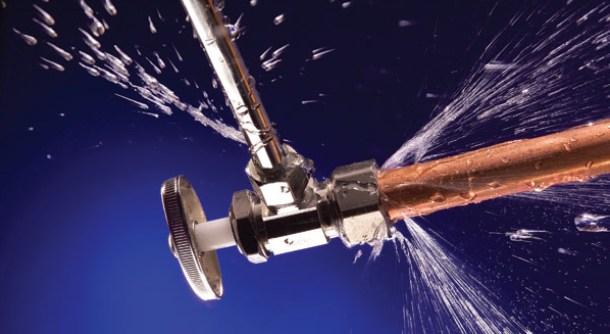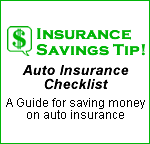Insurance BlogTuesday, April 10 2018
Full tort? Limited tort? …. what’s a tort? Don’t worry, we’ve got you covered. If you live in Pennsylvania, you may know what tort is. For the rest of the country (attorneys excluded), tort is not only a cute nickname for a tortoise but is also a legal term meaning “civil wrongdoing – in civil law, a wrongful act for which damages can be sought by the injured party.” In other words: tort means that someone can seek legal action against someone else for causing damage to them during an accident. Still confused where Pennsylvania comes into the equation? Let me explain. Full tort and limited tort car insurance options were instituted by the state of Pennsylvania in an attempt to decrease the number of pain and suffering lawsuits in Pennsylvania courts. Individuals who now purchase insurance in Pennsylvania are classified as either “limited tort” or “full tort.” So, what’s the difference between full tort and limited tort? So glad you asked – you’ve been paying attention. Let’s discuss. Full TortRegardless of the extent of the injury or damages, someone with Full Tort coverage is able to assert a claim for pain and suffering – so long as the accident was not their fault. Someone with full tort coverage is not obligated to first demonstrate that they received a serious injury from the accident before they can recover damages for pain and suffering. Because there is no threshold which must first be met, someone with full tort coverage can automatically assert a claim with their insurance provider for all of the losses they experienced from the accident, such as damages to the vehicle, medical bills, etc. – not just the out-of-pocket costs. Limited TortThe other side of this coin is Limited Tort. Limited tort permits someone injured in a car accident to only recover for their out-of-pocket medical bills, wage loss, automobile repair costs, and other actual monetary loss. When someone elects to have limited tort insurance coverage, they are foregoing the right to pursue damages in a personal injury claim for pain and suffering and other similar damages, even in situations where they are not at fault. The Exception to the RuleBUT (and there is a but) – there is a limited exception to this general rule that permits someone with limited tort coverage to pursue a claim for pain and suffering where the injuries they sustained in the car accident were considered “serious.” Yes, serious in quotes, because “serious” injuries are not always clearly defined or proven. Of course, in cases where someone requires life-saving treatment following a car accident, those injuries sustained would be considered serious and allow full recovery for pain and suffering. The problem here is that in the majority of cases, the line that differentiates a serious injury from that of a non-serious injury is less clear. So Which Tort is for You?Limited tort is the more appealing option for many people because it’s less coverage and therefore less expensive. However, this choice could end up costing them greatly if they are ever involved in a car accident later on. Metromile offers both full tort and limited tort options for our customers in Pennsylvania.
Monday, June 12 2017
American spending on home renovations and repairs is expected to peak at $327 billion in 2017, according to the Remodeling Futures Program at the Joint Center for Housing Studies of Harvard University. A large percentage of this spending is for the services of general contractors and subcontractors. Yet home owners are often unaware of the large exposures that could result in hiring an unlicensed or uninsured contractor, particularly for large projects. For example, an uninsured roofer working on a home may sue the home owner for damages if he is injured on the job. The following tips should be passed on to home owners to help them select contractors to work on their home, especially for major projects. •Be wary of contractors who solicit business door to door or via cold calls. In addition, avoid contractors who quote you a price that will automatically go up the next day or week if you don't accept it immediately. •Obtain recommendations from friends, family members, and neighbors about experienced and reputable contractors who have performed excellent work for them. •Ask for a written estimate from the contractor that includes any oral agreements the contractor makes in this process. The estimate should contain a line-by-line breakdown of costs, including materials and labor. •Verify that the contractor is licensed, bonded, and properly insured. Ask for certificates of insurance for workers compensation and general liability policies. You should also receive these certificates for any subcontractor the general contractor may hire to work on your home. •Contact the Better Business Bureau to see if complaints have been filed against the contractor. This can be performed via the bureau's website at www.bbb.org. •Obtain a copy of the proposed contract. Ideally, it should include a hold harmless clause in your favor, particularly for major work such as when heavy equipment will be used in constructing a swimming pool. A hold harmless clause specifies that the contractor will indemnify you with respect to your liability to members of the public who are injured or whose property is damaged during the course of the contractor's operations. The contract should also explicitly establish an independent contractor relationship. •Ask an experienced attorney to review the home repair contract before you sign, particularly for large remodeling projects.
Get more personal lines insurance and risk management tips and ideas from IRMI. Copyright 2017 International Risk Management Institute, Inc. Friday, April 14 2017
Plumbing fixture failures and faulty installations are a leading cause of interior water damage in homes and businesses. Even in the warmer months, when frozen pipes are not a threat, costly losses can arise from what would appear to be simple plumbing problems. Minor leaks and clogs should be taken care of properly as they may be signs of more serious issues. If a pipe, appliance, hose, or fixture contains running water, it needs to be properly maintained to prevent any water related losses. The list below contains the places where failures are most likely going to happen if not kept in working order. Toilets Clogs and overflowing toilets made up 33% of all toilet failures that led to water damage. The valves and flushing mechanism of every toilet in your building should be inspected every six months to ensure they are working and show no signs of wear. The shut off valve should be easy to turn and the supply line should be able to be turned off as well. Drains & Pipes Banging pipes, increased water bills, rust stains, and moisture on walls and floors are all signs of plumbing and drain problems. Keep drains and pipes clear of obstructions, and never pour grease down a drain. Have a backflow prevention system installed in your sewer connection if your home or business is located downhill or below street level. For an extra security measure, have a house leak detection system installed. Washing Machines Failure of the hose which supplies water to a washing machine is a leading cause of water damage. The hose should be replaced if there are cracks or blisters, and/or if the tubing appears worn. This should be done every five years or when the situation merits. If you are planning on vacating the building for a long period of time, turn off the water supply valves. When doing the laundry, do not overload machines and only use detergents designed for this type of use. Water Heaters Like any piece of equipment, age is an important factor in the odds of a mechanical failure. Even with proper maintenance, water heaters need to be replaced after they reach their life expectancy (typically around 10 years – check your manufacturer for model-specific information). In addition, water heaters should be inspected by a plumber every year for broken valves, loose joints, and rust. Wednesday, March 29 2017
Renters insurance comes in handy when the unexpected happens. From a house fire to a break-in, it’s important to know that your personal items are covered when it matters most. What’s more, covering your potential liabilty is equally as crucial. If you’re sued because of negligence or something completely out of your control, like a party guest breaking an ankle in your driveway, renters insurance can be your saving grace. Many insurance companies offer substantial coverage at an affordable rate, but there are still several things to consider before starting a policy. I’ll share answers to five common – yet critical – questions about renters insurance. Your renters insurance checklist: 1. Who needs renters insurance? Most landlords require proof of insurance before a new tenant moves into a home or apartment; making renters insurance a foregone conclusion in most cases. Since you aren’t buying the place you’re moving into, the property owner wants to make sure that you will be able to pay for any damage that may occur while you’re occupying their space. A wild party or overflowing sink can cause significant damage to a structure, which can lead to astronomical repair bills that most renters just can’t cover out of their own pockets. Requiring renters insurance is the easiest way for a property owner or landlord to ensure that their investment is covered if the tenant causes major damage during the lease. This means that the tenant’s liability is covered, as well. Even if you find yourself in a living situation that does not require renters insurance, maintaining coverage is still a good idea. If you are a dog owner, for example, your furry family member can open you up to a significant risk of a lawsuit if they were to bite someone. The truth is that all dogs bite, no matter how docile, and this fact alone is a prime reason to cover your liability. The same can be said for children, who are your responsibility wherever they may go until they become adults. When you begin to realize how much exposure you face on a daily basis, it’s not difficult to comprehend the value of protecting yourself against a lawsuit. 2. Are all renters insurance policies the same? Nope. Outside of liability, it’s also important to cover the items you’ve spent hard-earned money on to fill your home. If you were to lose everything in a fire, would you be able to replace all of your personal property out of pocket? The answer for most people is a definitive “no.” While renters insurance does provide coverage for personal property, it’s important to understand how you would be compensated in the event of a claim. You choose the amount of personal property coverage on your policy so you need to have an understanding of how much money would be required to replace your belongings in the event they are damaged or stolen. Renters policies cover personal items in one of two ways: actual cash value (ACV) or replacement cost.
The main thing that consumers need to understand about the two valuation types is that replacement cost policies generally cover your items at a higher amount than one that uses ACV. The premium for a replacement cost policy is a bit more expensive, however, so it’s important to consider how much it would take to replace your personal items before you decide which option is right for you. What’s the best way to inventory your property?I recommend a multi-faceted approach. It is impractical to save every receipt for every purchase you make; storing receipts can be cumbersome and there is a risk that they could be lost in the event of a fire. A simple fix would be to snap a picture of your receipts and save them to a Google Drive or Dropbox. This also allows you to access those receipts from any device with internet access even if the original is rendered unusable. And for items which you no longer posses a receipt, taking a video of your belongings makes them easily identifiable. It’s also a good idea to update the video or pictures of receipts and personal items as you add them. MedicalMedical coverage is offered on most renters policies to pay for injuries that a guest may suffer at your residence. Imagine your friend trips on your lawn during your backyard BBQ and breaks his leg. Ideally, your guest won’t want to file a lawsuit against you, but he probably doesn’t want to pay for expensive emergency room bills either. Fortunately, the medical coverage on your policy will normally pay for those costs as long as this person isn’t a member of the household. This can help your friend avoid having to pay the deductible on his medical insurance and also help you avoid a potential lawsuit. Loss of useOne last coverage that renters policies offer, and one of the most important in my opinion, is loss of use. Also referred to as “additional living expense” coverage, loss of use is intended pay for expenses that arise when you aren’t able to stay in your home or apartment after a covered loss. If you suffer a fire or a break-in, you may not be able to stay at your residence until repairs are made. Loss of use coverage pays for things like hotel stays and even food expenses if your place becomes unlivable due to a covered loss. This coverage can vary by provider so it’s a good idea to account for an extended stay when determining how much coverage is right for you. 5. What makes renters insurance more or less expensive?
First and foremost in your renters insurance checklist is the answer to whether or not you should have it, and the answer (whether you’re required to carry it or not) is a resounding “yes.” The potential benefits far outweigh the costs, and the peace of mind alone can make the cost of the policy worth it. Not all renters policies are the same so it’s important to ask your the agent providing a renters insurance quote as many questions as necessary to make an informed decision. The worst time to find out that you aren’t covered is after something serious has happened. And as always, shopping with as many companies as possible will result in the best coverage at the best rate.
Tuesday, February 28 2017
Most small businesses use or own at least one vehicle, sometimes more. But often small business owners blur the lines between the personal autos that they use for business purposes and vehicles that are purchased by the business itself. The standard personal auto insurance policy generally has limitations or exclusions relating to business use that could have an impact on the recovery for damage to the vehicle or personal injury. Consider for example, a self-employed computer technician who drives a pick-up truck to visit clients. In addition to his own computer equipment, he carries property that belongs to his clients. What happens if he is in an accident and the client’s equipment is damaged? What happens if the truck is parked in a parking lot and all the contents are stolen? A small, local dry cleaner may have two or three vehicles that are used for pick-ups and deliveries to clients. That business owner is more likely to have some business auto coverage, but is it the right coverage for the vehicles themselves or the drivers? As author David D. Thamann explains in the Small Business Auto Coverage Guide, coverages available under the commercial auto policies are similar to those found in the personal auto policy, such as liability, medical payments, uninsured/underinsured motorist and physical damage. The personal auto policy also excludes coverage for any insured’s liability arising out of the ownership or operation of a vehicle while it’s being used as a public or livery conveyance, as many Uber and Lyft drivers have found to their dismay. Here is an overview of five key facts to discuss with your small business owner clients to ensure that they have the right coverage for their needs. 1. Know your symbols
Unless there’s a coverage symbol shown beside the coverage name, the coverage won’t apply. And unless the correct coverage symbol is shown, the small business owners may be without the coverage they intended to have. The covered auto designation symbols in the business auto policy are numerals ranging from 1 through 9 and 19. Here are a few examples: Symbol 1 — Any Auto. When the policy has a Symbol 1, the small business owner will have coverage for any auto owned, hired, borrowed or used by the insured. Symbol 1 encompasses all the other coverage symbols.
2. Liability coverage
The insuring agreement contains several clauses defining who is an insured, which is an important section for agents to review with small business owners. Anyone who fits the definition of an insured can qualify to receive the benefits of the insuring agreement — even if that’s not the person who paid the premiums. It’s also important for agents to remind clients that coverage under CA 00 01 applies separately to each insured seeking coverage or against whom a claim is made. 3. Physical damage coverage
The coverage agreements list the various ways in which a covered auto can suffer physical damage and lists the kinds of losses the carrier will pay for. To activate coverage, however, a covered auto designation symbol must be placed in item two of the declarations form. The policy will pay for a loss, which is defined as a direct and accidental loss or damage to a covered auto. If there’s no direct physical damage, there’s no “loss.” The policy generally doesn’t provide coverage for consequential damage or loss of use of the vehicle. 4. Business auto conditions
The loss conditions are:
The general conditions are:
5. Business auto policy definitions
These are just a few of the key points that insurance agents should discuss with clients to ensure that the vehicles used in the client’s small business are insured correctly. For more about the topic, see “Small Business Auto Coverage Guide,” by David D. Thamann, J.D., CPCU, ARM, published by The National Underwriter Company, a division of ALM Media LLC.
Thursday, January 19 2017
Shopping for your dream house? It’s important to keep insurance in mind throughout the home buying process. Most lenders won’t provide a mortgage without insurance coverage. Your insurance company or agent, together with your realtor, can help you get what you want – a good home that is properly protected. EVEN BEFORE YOU START LOOKING FOR A HOME Put yourself in the best possible position to be able to afford a home, receive the lowest possible mortgage rate and get insurance for your new house. This takes advance preparation on your part. Check your credit rating
Good credit helps you in many ways, including getting a mortgage at a good rate. Depending on the state and the insurer, it may also help you save money on your homeowners insurance. Get a copy of one or all of your credit reports. Make sure they are accurate and report any mistakes immediately. The credit report helps you see how your credit standing compares to others. If your credit is not as good as it should be, begin to improve it immediately. Check your home insurance claims-filing history Get a copy of your loss history report, such as a CLUE report from ChoicePoint or an A-PLUS report from ISO. This is a record of home insurance claims you have filed. If you have not filed any insurance claims in the past five years, you will not have a loss history report. The better your claim record, the less you may pay for insurance. A good claims record can also be important if you are selling the home you are currently living in. However, a past claim does not have to be a problem; the reulting repairs or improvements, if done properly, can make a property more attractive to buyers and insurers. Renters insurance If you are currently renting, it’s important to have insurance for your personal property. Your landlord’s coverage will not cover the things you own. If you haven’t owned a home before, it might be helpful to have a history of insurance when you go to buy your first home. As you look at homes, remember that characteristics of the house (where it is, how it's constructed and the kind of shape it’s in) can send your insurance rates up or down. Construction of the house
If you plan to live near the Atlantic or Gulf coasts, consider a brick home because it is more resistant to hurricanes. If you are buying in a seismically active region, look for newer homes built to current codes, or older homes that have been bolted to their foundations. They are better able to withstand earthquakes. Age of the house Older homes sometimes have features such as plaster walls, ceiling molding and wooden floors that could be costly to replace. Such special features may raise the cost of insurance. Also, an older home that has been updated to comply with current building codes is typically less expensive to insure than an older home that is not up-to-date. Condition of roof and home If you are considering a “fixer upper,” you may pay more for insurance until clear improvements are made. In particular, check out the condition of the roof. A new roof in good repair will be attractive to insurers and will save you money as well as aggravation. These systems can wear out, become unsafe with age or become dated as safer technologies are introduced. Recent upgrades make your home safer and less likely to suffer fire or water damage. Homes equipped with smoke, fire and burglar alarm systems that alert an outside service may get sizeable discounts. Strong doors, dead bolt locks and window locks may also reduce insurance costs. You will need higher property and liability coverage if you are buying a home with features such as a pool or a wood burning stove. In the case of a pool, consider getting additional coverage, such as an umbrella or excess liability policy. Homes near a fire station, those with a hydrant close by and those located in communities with a professional rather than volunteer fire department will cost less to insure. Homes near the coast will be more expensive to insure because the risk of hurricane, wind or water damage is greater. In many states, you will pay the first few thousand dollars in damage before your insurance kicks in. You also need to think about the threat of floods or earthquakes. You will need separate insurance for these risks and it can be costly. Also, around the country, there are high-risk areas vulnerable to hurricanes, brush fires or crime that might not qualify for private insurance. To make insurance available, there are state-sponsored Fair Access to Insurance Requirement (FAIR) Plans. FAIR Plans, however, can be expensive and provide less coverage. PLACING A BID You have looked at a number of properties and are narrowing your search to a few homes. Now you need to get more specific information on the house and its insurability. Check the house’s loss history report
Ask the current homeowner for a copy of the house’s insurance loss history report. This will provide information regarding claims filed during the last five years and answer two questions that any savvy homebuyer should ask: Are there any past problems in the home? If damage has occurred, was it properly repaired? Prior claims are not barriers to getting insurance, but you should know the history of the home before you go to closing. Get the house inspected A thorough inspection of the home is very important. The inspector should: check the general condition of the home; show you where potential problems might develop; double-check that past problems have been repaired; and suggest upgrades or replacements that may be needed. If a house has been well-maintained, you should have no trouble getting insurance. However, if the inspector raises questions, your insurance company will as well. In particular, have the inspector check for water damage, termites and other types of infestation. Special attention should be paid to the electrical system, septic tank and water heater. Find out if there is an underground oil storage tank, as many insurers will not provide policies for homes that have one. Contact your insurance professional Don’t wait until the last minute to think about insurance. Ask your current insurance professional if the house will qualify for insurance and get an estimate of the premium. The sooner you act, the smoother the process will be. If you do not have an insurance agent or company representative, get recommendations from family, friends or co-workers. Select someone you know and trust, as he or she will be an advisor for many years. Shop around for the best coverage Most people spend months looking for a house, but only spend a few minutes insuring it. Insurance companies sell insurance in different ways – some through their own agents, others through independent agents or brokers and still others directly by phone or over the internet. Select the arrangement that you are most comfortable with. Get the names of several highly regarded insurers. The higher the financial rating, the better prepared they will be if a real disaster strikes. Then compare prices – it could cut hundreds of dollars off the cost of your bill. PURCHASING THE HOUSE AND INSURANCE Congratulations, you are set to purchase your new home. Now you want to be sure you are getting the right insurance coverage at the lowest possible price. Take the highest deductible you can afford
The higher the deductible, the lower the premium. Since most people only file a claim every eight to ten years, you will save money over time and preserve your insurance for when it’s really needed. Ask about available discounts for:
Get enough insurance to:
Ask about additional coverage such as:
Damage caused by flooding and earthquakes is not covered by standard homeowners insurance policies. Instead, homeowners will need to pay an additional premium for coverage that is provided through the government’s National Flood Insurance Program (NFIP). To get flood insurance, your community must participate in the NFIP program. Policies for coastal properties will have a sizeable windstorm deductible, which means the homeowner may be responsible for thousands of dollars of damage before insurance kicks in. It pays to know what is in your policy. Earthquake insurance is offered by private insurance companies. In California, coverage is available through the California Earthquake Authority, a state program, as well as the private market. It can be expensive and comes with a high deductible. AFTER YOU PURCHASE YOUR NEW HOME Properly maintain the house
Maintain your home as you would your car. Every year, there are important things you should do to reduce the chance that you will experience water damage, fire or other insured loss. Insurance does not pay for routine maintenance or damage resulting from neglect. The cost for proper care should be calculated into your overall budget. It’s your responsibility to be the “risk manager” for your home. If you do your part to reduce insurance losses, not only will your home be safer, it will also save you money on your insurance bill. Keep insurance up-to-date Let your insurer know about alterations, additions and improvements to your home. Major purchases and lifestyle changes such as a marriage or divorce should trigger a call to your insurance professional. This way, you can maximize your insurance dollars by not being either under- or over-insured. Tuesday, January 10 2017
Shopping for auto insurance? The price you pay for your auto insurance can vary by hundreds of dollars, depending on your driving record, the type of car you have and the insurance company you buy your policy from. Here is a list of things you can do to save money. Before you buy a car, compare insurance costs Your premium is based in part on the car's sticker price, the cost to repair it, its overall safety record and the likelihood of theft. Many insurers offer discounts for features that reduce the risk of injuries or theft, such as air bags, anti-lock brakes, daytime running lights and anti-theft devices. For more information on car safety, check the Insurance Institute for Highway Safety. Cars that are favorite targets for thieves cost more to insure. For more information on car theft, check the National Insurance Crime Bureau (NICB). Ask for a higher deductible Your deductible is the amount of money you pay out-of-pocket before your insurance policy kicks in. By requesting higher deductibles, you can lower your costs substantially. For example, increasing your deductible from $200 to $500 could reduce your collision and comprehensive coverage premium by 15 to 30 percent. Going to a $1,000 deductible can save you 40 percent or more. However, keep in mind that you'll need to have the amount of the deductible on hand should something happen to your car. Reduce coverage in older cars Consider dropping collision and/or comprehensive coverage on older cars. It may not be cost-effective to continue insuring cars worth less than 10 times the amount you would pay for coverage. Any claim payment you receive would not substantially exceed your premiums minus the deductible. Claims occur on average only once every 11 or 12 years. Auto dealers and banks can tell you the worth of a car, or you can look it up online at Kelley Blue Book. Buy your homeowners and auto coverage from the same insurer Many insurers will give you a discount if you buy two or more types of insurance from them. Also, you may get a reduction if you have more than one vehicle insured with the same company. Some insurers reduce premiums for long-time customers. But shop around carefully; you may still save more money buying from a different insurance company even with the multi-policy discount. Take advantage of low-mileage discounts Some companies offer discounts to motorists who drive a lower than average number of miles per year. Low mileage discounts can also apply to drivers who carpool to work. Ask about group insurance You may be eligible to get insurance through a group plan from your employer, or through professional, business and alumni groups or other associations. Group plans often provide substantial discounts. Ask your employer, or any groups or clubs of which you are a member, about this option. Maintain good credit Your credit rating may affect what you pay for insurance, so monitor it carefully. You can get this information directly from the three major credit-rating agencies (Equifax, Experian, Trans Union). There are also various Web sites that allow you to check your credit rating and provide tips on how to improve your score. Seek out safe driver discounts Most insurance companies offer discounts to policyholders who have not had any accidents or moving violations for a number of years. You may also qualify for a cut if you have recently taken a defensive driving course, if you are over 50 and retired, or if there is a young driver on the policy who is a good student, has taken a drivers education course or is away at a college, generally at least 100 miles away. When you comparison shop, be sure to inquire about discounts for the following (availability will vary according to the state and company):
But don't forget that the key to savings is not the discounts but the final price. A company that offers few discounts may still have a lower overall price. Monday, January 09 2017
Welcome to our blog! We are thrilled to be able to keep you updated regularly with insurance information and local news or events. As always, we would love your thoughts, questions or ideas, so feel free to let us know what you think. |











